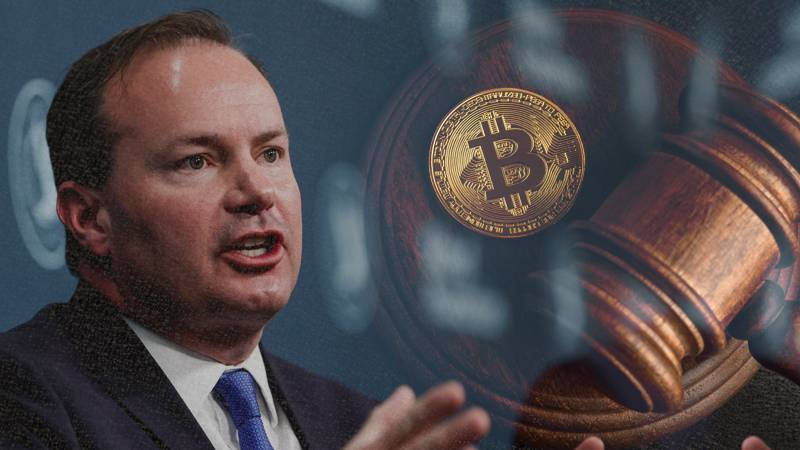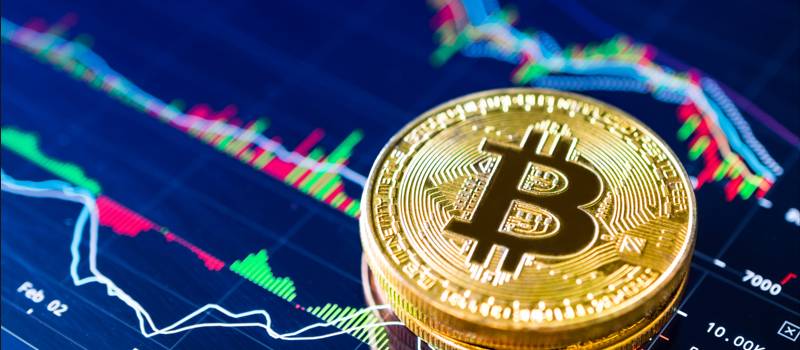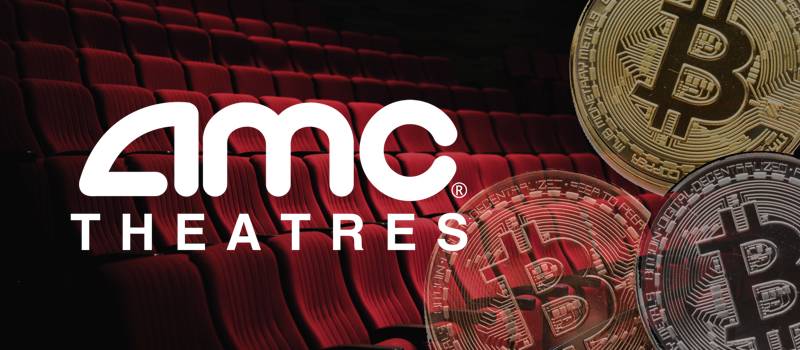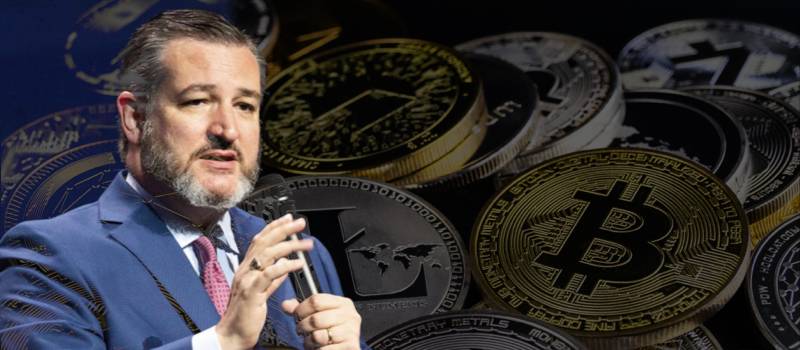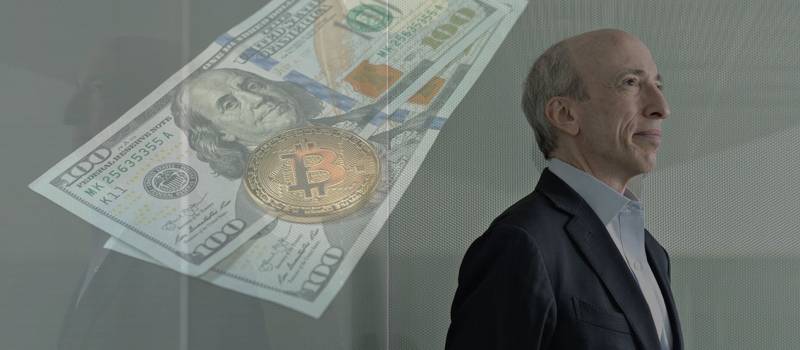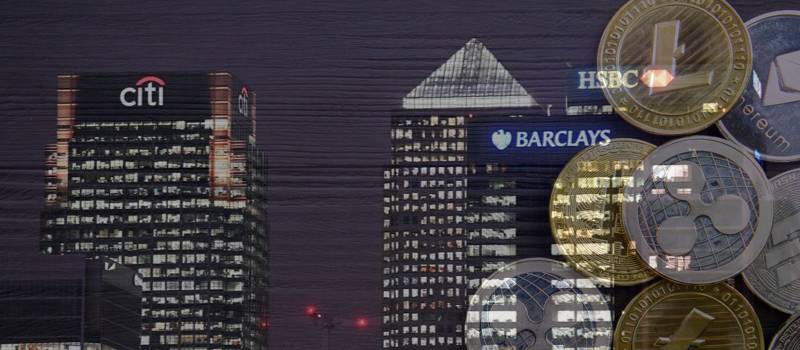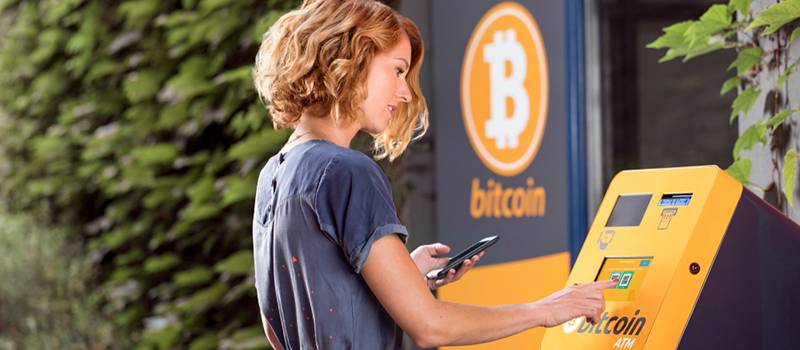August 2021 In Review
What a month! The month of August continued the brutal struggle between the bulls and bears of crypto, with much commentary making the case for each persuasion. Once again, who should you believe? Perhaps it is necessary to review all of the articles below and see how the cycle of news, regulations, and trading affected the price of BTC and other crypto currencies. Looking closely, there seems to be a rhyme and reason for both the overwhelming confidence and the crushing hysteria. Maybe neither side is right, and this is the never-ending story of how major assets find their way to their ultimate goal. Life itself is fickle in these days and remember what I have said before: finding riches right from within one’s own family, one’s group of friends, and especially from within oneself, will never disappoint you. The stuff life should be about. Peace, security, and joy – you don’t need crypto to get that.
August continued the recent trends, which themselves are ripe with conflict. It proved, once again, that those of us in the game for the long-term will win and those who are not, will mostly lose. Remember my motto: as always in trading asset classes of any kind, patience and a calm-hand are virtues. Crypto is an exercise in endurance. It is seemingly daily chaos, and so you must learn to have what it takes to make it through these swings and stay the course. A lot happened in August which informed our ever-accelerating trajectory into discovering what the crypto market will deliver for the foreseeable future. Early in the month, regulators set off a terror-frenzy, leading shorts to get clobbered by quick descents followed by an even faster ascent in prices. Those swings proved to be too much, and short-term investors going either way lost their shirts. Senator Warren led the charge for further regulations, while Ted Cruz tried to persuade the Senate to stop their nonsense. Bickering from both sides of the political spectrum proved America can’t agree on even one thing – its government stands in its own way, wasting money rather than providing for its citizens.
By the middle of the month, AMC and El Salvador plowed full steam ahead with BTC acceptance, and we learned from Carl the Moon that fear and greed were both contra indexes. With indicators flashing both buy and sell, sometimes simultaneously, many scratched their heads while hearing news that banks across the globe were making plans for crypto. As the month came to a close, the bulls remained firmly in charge, and price targets for crypto currencies for the end of the year had us singing like songbirds. Emerging markets led the growth, leading us all to wonder why established economies take their time in adopting new asset classes.

Amazon rumours lead to $1 billion in crypto ‘shorts’ getting liquidated
“Ethereum, Cardano, and Bitcoin Cash will be next in line before they bring about eight of the most popular cryptocurrencies online. It won’t take long because the plans are already there, and they have been working on them since 2019,” news publication CityAM quoted an ‘insider.’ He, or she, was referring to the global online marketplace Amazon moving to ‘definitely’ accept Bitcoin at the end of this year, followed by the addition of Bitcoin Cash, Ethereum, and Cardano next year. What followed, according to data from market tool Bybt, was nearly $1 billion worth of ‘short’ traders being liquidated in the middle of last week, with $750 million of that amount coming from Bitcoin trades alone. It was a frenzied development on social media, but will Amazon soon be accepting crypto? The news remains unsubstantiated, and an Amazon spokesperson told Business Insider that the firm was ‘inspired’ by the innovation happening in the crypto space. The spokesperson would not comment on the matter of crypto integrations being accepted into the platform. Reviewing Amazon’s job postings, however, showed that there was a newly added position for an ‘experienced product leader’ who could develop the company’s “Digital Currency and Blockchain strategy and product roadmap.”
The posting itself read: “You will leverage your domain expertise in Blockchain, Distributed Ledger, Central Bank Digital Currencies and Cryptocurrency to develop the case for the capabilities which should be developed, drive overall vision and product strategy, and gain leadership buy-in and investment for new capabilities.” Despite the development being unconfirmed, crypto traders were very hungry and quite eager to react to some relevant news in a big way. Bitcoin jumped 11% on Monday morning of last week, and Chainlink, Cardano, and Dogecoin all showed mid-double-digit gains. Those betting against the market saw nothing but the deathly feel of anguished pain. Bybt’s liquidation data indicated that almost $962 million worth of ‘shorts’ were liquidated by mid-afternoon on Monday, with over seventy-five percent of that liquidation coming from Bitcoin trades alone. Others went along for the ride: futures powerhouse Bybit saw nearly $382 million in short-side liquidations, followed by Huobi at $200 million, OKEx at $188 million, and Binance at $88 million. The futures markets for Bitcoin on Binance saw a temporary price wick to as much as $48,000, arguably liquidating thousands of traders who may have posted their stop losses much higher than current prices. It makes one wonder: where does all of that money go to? Thin air? Short liquidations reached the second-highest level this year, just a few tens of millions below May 2021’s short-side carnage (which saw $1 billion in ‘short’ liquidations, but also a staggering $7 billion in ‘long’ liquidations). Over 98,000 traders had been liquidated in the 24-hour period between Monday and Tuesday morning, with the single largest liquidation order occurring on Huobi, a Bitcoin trader valued at $29.3 million. For many others, it was just another day in the crypto market. Did I hear someone say, “Never watch and then follow the flock.” In this case at least, the trend was definitely not your friend.

CARDANO (ADA), DOGECOIN (DOGE), CHAINLINK (LINK) LEAD GAINS AS CRYPTO MARKETS JUMP
As mentioned above, the crypto markets saw billions of dollars in gains at the start of August after months of ‘ranging,’ and leading the charge was Bitcoin, the world’s largest cryptocurrency by market cap. Bitcoin jumped over 10%—from $35,000 to $38,000—and at one point, it rocketed as high as $39,000. Fair to say, bitcoin was trading well over its 34-period moving average (a popular tool used to determine market trends based on historic asset prices) last Monday morning. By the middle of the week, it was selling at the ‘resistance’ level of $38,000, and it seems that the $40,000 mark might remain another resistance level. Large-cap cryptocurrencies like Cardano, Dogecoin, and Chainlink followed Bitcoin’s lead with mid-double-digit percentage gains. As such, the fifty largest cryptocurrencies by market cap also showed high single-digit percentage gains during the same time period. Here is a rundown of mid-week moves: Decentralized oracle service Chainlink was up 12%—from $16.62 to $18.86—followed by meme token Dogecoin (+13%, from $0.19 to $0.22) and the proof-of-stake blockchain platform Cardano (+11%, from $1.22 to $1.37). Other large-cap market leaders were XRP (+9%), Polkadot (DOT; +10.3%), Bitcoin Cash (BCH; +11.3%), and Ethereum Classic (ETC; +13.3%). But the question remained on everyone’s mind: is Amazon going to start accepting Bitcoin? Observers in crypto circles on Twitter linked the crypto currency moves to ‘insider’ reports of global online marketplace Amazon wanting to integrate Bitcoin payments for its services by 2022 and perhaps even launching its own coin. These reports; however, had remained unsubstantiated throughout last week.
“It begins with Bitcoin – this is the key first stage of this crypto project, and the directive is coming from the very top… Jeff Bezos himself.” https://t.co/vyAvu0CPc2— Will Clemente (@WClementeIII) on July 25, 2021. Meanwhile, not all traders made bank. Data from market tool Bybt shows nearly $1 billion worth of ‘short’ traders had gotten their ears cleaned by early Tuesday morning, with $480 million of that amount coming from Bitcoin trades alone. If that bloodbath weren’t enough, the news grew evermore dreary for those hoping for a Bitcoin collapse. Futures markets for Bitcoin on Binance saw a temporary price wick to as much as $48,000, thereby liquidating even those thousands of traders who had posted their stop losses much higher than most others.

Tether (USDT) slams Bloomberg over criminal probe accusations
Oh boy – a war is brewing! A recent report by Bloomberg about Tether (USDT) facing a criminal probe in the US, received a snappy response by the issuers of the largest stablecoin. With their response, they claimed the alleged accusations do not rise to the level of news but were published purely as clickbait. The original report had cited three unnamed sources who claimed they had direct knowledge of the matter – and that the US Department of Justice (DoJ) investigation was focused on conduct that occurred years ago, scrutinizing whether Tether failed to disclose to banks that their transactions were linked to crypto. Tether’s response read, in part, [Bloomberg’s article was] “patently designed to generate clicks,” and it went on to state that the report was consistent with the pattern of recycling outdated claims as news. It continued: “the continued efforts to discredit Tether will not change our determination to remain leaders in the community.” Tether issuers went on to reveal the makeup of its reserves in May, reaffirming that “Tether routinely has open dialogue with law enforcement agencies, including the U.S. Department of Justice.” Even though their statement underlined Tether’s “commitment to cooperation, transparency, and accountability,” its issuers still had not produced an audit.
“We are proud of our role as industry leaders in promoting cooperation between industry and government authorities in the U.S. and around the world,” continued the issuer’s response to Bloomberg’s controversial article. They finally concluded in a casual tone, and with great reassurance. “It is business as usual at Tether, and we remain focused on how to best serve the needs of our customers.” Tether’s general counsel Stuart Hoegner reaffirmed that Tether’s long anticipated audit appears to be only “months away.” Regardless of the content, the audit will most definitely provide mainstream media with great, and oftentimes rather fake, “news.” Tether’s response during the middle of last week prompted swift debate on Twitter, and the tweets ranged from advice on how to handle clickbait accusations, to effective solutions about tackling recurring skepticism.
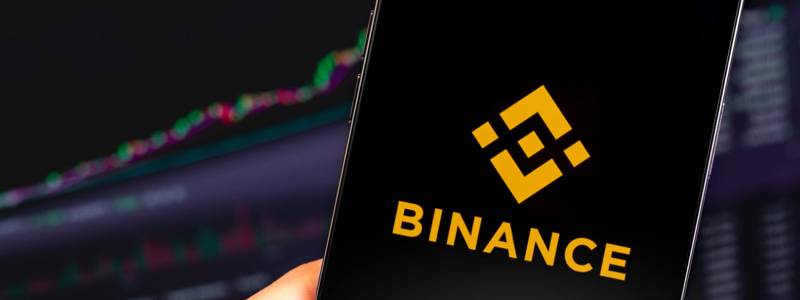
Binance limits daily withdrawals to $2,000 for basic accounts amid regulatory woes
Major cryptocurrency exchange Binance announced that users who had passed only their “Basic” verification won’t be able to withdraw more than 0.06 Bitcoin (roughly $2,000) worth of funds per day, which is down from the previous limit of 2 BTC (around $80,000 currently). “Daily withdrawal limits will be adjusted to 0.06 BTC for accounts which have completed only Basic Account Verification,” the platform stated. The change is effective immediately for new users, while existing basic accounts will become subject to the new rule in phases between August 4 to August 23. “We’re enhancing our KYC efforts to further our leadership in this area,” Binance CEO Changpeng Zhao confirmed on Twitter. He added that new limits are part of Binance’s overall effort “to adapt to new regulations in order to best serve our users.” In general, such stricter know-your-customer (KYC) requirements are usually put in place to combat money laundering and other illicit activities. Currently, Binance has three verification levels for personal accounts: Basic, Intermediate, and Advanced. For the basic level, users just have to fill in their name, nationality, date of birth, and address. With such an account, customers can quickly engage in crypto-to-crypto trading, as well as withdraw and deposit digital assets and minuscule amounts of fiat (up to $300 for the account’s lifetime). For intermediate and advanced verification, users will have to also provide their photos and other documents that confirm their personal data.
Regulatory pressure is intensifying, and this latest move comes amid the increasing heat that Binance has been facing from regulators across the globe. As reported in CryptoSlate, the exchange has recently delisted numerous trading pairs that involved the Australian dollar (AUD), the Euro (EUR), and the British pound sterling (GBP). Binance also limited the maximum leverage for new margin traders to 20x and dumped “stock tokens” amid regulatory pressure in the U.S., Japan, Hong Kong, Britain, Italy, and the Cayman Islands.

Morningstar analyst pegs Cardano (ADA) as one of the “big three” cryptocurrencies
Pointing out that each has its pros and cons, Morningstar Portfolio Manager Amy Arnott believes that Cardano, along with Bitcoin and Ethereum, has the potential to rise up to form the “big three” mainstream cryptocurrencies. Whereas Bitcoin lacks the ability to generate cash flow, she claimed that Cardano will soon offer the technical applications of Ethereum, but without its extreme volatility. These qualities will undoubtedly catch the eyes of institutional investors as its ecosystem fills out, Arnott stated. It would seem that Cardano shows stability in the face of panic. Meantime, the eagerly anticipated Alonzo protocol is edging closer to rollout. Earlier this month, Input Output Global CEO Charles Hoskinson gave an update, saying, “All things considered, velocity is exactly where it needs to be, the progress is exactly where it needs to be. Alonzo is coming.” Hoskinson has taken the time to keep the community posted on Alonzo’s progress, and the best current estimates put a mid-August/early September date for the rollout.
Soon, Cardano will have the functionality to compete with other smart contract platforms, and Arnott mentioned that potential technical applications might stimulate interest from institutional investors. “Cardano is similar to Ethereum in that it’s a protocol that has a lot of potential technical applications. There’s a lot of enthusiasm about Cardano and also various stablecoins,” Arnott stated.
ADA peaked at $2.50 during the run-up in May, however, following a sixty-four percent drop as all of the FUD took hold, it had bottomed at $0.90 over a four-day period. Since then, it has been ranging between $0.98 and $1.90. In parody with Bitcoin’s revival last week, ADA had also seen a resurgence. Late last week, there was a 26% swing in price, which took it back above the 50-day MA for the first time since mid-June. The price then retraced once again, and it seemed by the end of last week that ADA was making several runs in its attempt to move above its 50-day MA. RSI showed a sharp upswing since the week prior, and by Friday, momentum was heading towards overbought territory with a reading above 50. Interestingly, although Arnott had used the word mainstream in her comments, cryptocurrency still has a number of barriers before it will go mainstream. Perhaps the primary reason for turning people off is regulatory uncertainty itself, followed by the issues of usability, more specifically, and ease of use. Christopher Miglino, the CEO of SRAX, pointed out that cryptocurrency can be intimidating for the average person, and this prevents many people from even trying to get involved. “The technological savvy needed to confidently buy and sell crypto is a big enough barrier to entry that it prevents the layman from getting started. Many companies are trying to make it easier, but the average person is still intimidated by the process.” And so, it may be that smart contract superiority will not be a matter of which platform offers the best, most profitable applications; but rather, which offers the highest level of simplicity.

These crypto analysts say Ethereum could reach $4,500 by 2022. Here’s why
Analysts from the personal finance comparison site, finder.com, said in the latest quarterly Ethereum Price Predictions Report that Ethereum (ETH) could be worth $4,596 by the end of 2021. Finder’s global panel consists of over forty senior cryptocurrency specialists and academics, and they were asked to give their thoughts and price forecasts for ETH. Their longer-term predictions suggested that ETH could hit $17,810 by the end of 2025, and $71,763 by the end of 2030. CoinFlip founder and chief advisor Daniel Polotsky also gave his forecast, and it was in line with the panel average. He expected ETH to be worth $4,000 by the end of the year, before skyrocketing to $64,000 by 2030. “Ethereum’s price largely follows Bitcoin’s halving cycles, although that relationship may begin to decouple as time goes on, and as Ethereum continues to develop use cases that Bitcoin cannot achieve. Then, its price may grow at a faster rate than Bitcoin’s,” Polotsky said. Interestingly, Morpher CEO Martin Fröhler and RealFevr’s head of blockchain, Pedro Febrero, see ETH topping $10,000 by December 2021. Fröhler stated, “Ethereum has the potential to power the future global financial infrastructure.” So, is Ethereum set to begin seeing even more transactions than BTC?
Over ninety percent of the Finder Global panelists thought that ETH will eventually become more frequently transacted than BTC, and a little less than half of these (48%) said they were expecting this to happen before the end of 2022. Fifty-six percent of the panel predicted that ETH would retain its DeFi dominance; whereas twenty-seven percent were unsure, and seventeen percent disagreed that it would. CoinSmart CEO Justin Hartzman thought that ETH would retain its DeFi dominance and be more heavily transacted than BTC as soon as next year.
He stated that, “people don’t like transacting with BTC since it’s more of a store of value. Ethereum, on the other hand, has built a full-on multi-billion-dollar ecosystem so the frequency of ETH transactions is definitely going to be a lot more.” Meantime, sixty-eight percent of the panel said the event dubbed “the flippening” (the time when ETH overtakes BTC as the biggest currency by market cap) is coming, and the majority of those (58%) believed it would happen within the next five years. Token Metrics senior cryptocurrency investment analyst Forrest Przybysz figured that ETH would be worth $8,000 by the end of this year and he thinks that the flippening will happen as soon as during the course of next year. “Ethereum’s move to proof-of-stake later this year or early 2022 will result in Ethereum’s supply becoming deflationary and will be equivalent to multiple “Bitcoin Halvings” in terms of supply restriction. This will make it a better store of value than Bitcoin in addition to all the utility it provides that Bitcoin does not have,” he said.
University of Western Australia associate professor of finance Lee Smales opined that the usefulness of ETH will inevitably lead to it surpassing BTC’s market cap. “Fundamentally, Ethereum is more ‘useful’ and so has greater utility than Bitcoin. Ultimately, this should lead to its value exceeding that of Bitcoin,” he said. While the majority of panelists expected ETH will ‘flip’ BTC, Banz Capital CEO John Iadeluca was part of the thirty-three percent who felt that ETH’s market cap will never exceed that of BTC’s. “Ethereum will most likely eventually become more frequently transacted than Bitcoin, but I do not see any scenario where Ethereum becomes worth more than Bitcoin,” he stated. And then there was the senior lecturer at the University of Canberra, John Hawkins, who thought ETH will see its value sink to $1,200 by the close of 2021. He stated, “I think Ethereum is a speculative bubble and will get dragged down by Bitcoin.” Yet, overall, sixty-three percent of the panelists firmly believed that now is the time to buy ETH, compared to just fifty-five percent who stated that now is the time to buy BTC.

DOGECOIN (DOGE), BITCOIN (BTC) RECOVER AFTER BRIEF EARLY MONDAY, AUGUST 2ND SELL OFF
During the end of the first week of August, Bitcoin and Dogecoin lost over 5% each after a brief sell-off in the crypto markets. Although they had regained most of the losses by the following Monday morning, futures traders were left nursing millions of dollars in losses. BTC had lost almost $2,000 in just a few hours—when it went from $41,500 to under $39,200—briefly closing under its 34-period exponential moving average. It seemed ready for a continued downtrend, however, instead, it was bought aggressively at those levels and regained the $40,000 price level by Monday morning of last week. There were still ensuing selloffs in other large-cap cryptocurrencies. Dogecoin fell nearly six percent to $0.201, while Cardano (ADA), XRP, and Chainlink (LINK) dropped a couple of percent each. On the other hand, Ethereum and Binance Coin remained relatively stable, falling barely over a percent before being heavily bought. The ‘spot’ movements were followed by over-leveraged futures traders succumbing to the relatively tame carnage. Data from market tool Bybt showed $400 million were lost to liquidations in the past 24 hours, with Bitcoin traders losing over $178 million of that amount alone.
These downward price moves came after reports of regulation involving cryptocurrencies in the US circulated late last weekend. The reports included talk of possible taxation of crypto trades and crypto business to increase revenue, especially needed to fund the new ‘Infrastructure Deal.’ It was thought that the crypto market as a whole would fall under further scrutiny from the Internal Revenue Services. An analyst at Beacon Policy Advisors noted the week prior that, “lawmakers and regulators are taking cryptocurrency concerns seriously and seem poised to make sustained efforts on multiple fronts to bring it out of the shadows. Regulation is coming for the industry.” Also, there were unfriendly comments about crypto from US officials. The Democratic senator from Ohio, Sherrod Brown, stated, “There’s nothing ‘democratic’ or ‘transparent’ about a shady, diffuse network of online funny money. After a decade of experience with these technologies, it seems safe to say that the vast majority haven’t been good for anyone but their creators.”

US banks urged to include Bitcoin, crypto in their plans for this crucial reason
The American Bankers Association (ABA), in a new report entitled “Understanding Crypto: What banks need to know,” has urged banks across the country to partner with crypto firms.
This is due to the increased profitability of the sector and rising client interest, according to the 20 page report, which also suggested various crypto use cases for banks with revenue models and regulatory issues for each use case. The ABA provided a high-level overview of crypto with a glossary, which maps crypto business activities to bank products and services. The report went on to explore the increasing profitability of the crypto industry, and how banks have found it more lucrative to take crypto companies on as partners, and their customers as clients. Crypto companies need banks to provide access to the payments system to onboard and offload fiat deposits, the report explored.
Some of the suggested partnerships for the banks included payment systems where a blockchain-powered payment network would allow for faster and more efficient international transactions. Also suggested was how the blockchain technology could be utilized to allow for cheaper and secure lending processes. Other activities which banks would find indispensable included KYC/AML, digital identity, reporting, and banking, where a bank could offer business banking services to crypto companies. The ABA further classified crypto assets into four categories: cryptocurrencies, Stablecoins, central bank digital currencies, and non-fungible tokens. Decentralized Finance (DeFi) also got a nod. The use cases ranged from Store of Value to Custody/Wallet Provider, and Interest-Bearing Accounts. Payments, lending exchange trading, broker-dealer insurance, network utility, and asset management were other use cases cited. Part of the summary of the report: “Blockchains represent a transparent and decentralized way of recording transactions, both financial and non-financial, but their use for the creation, storage, transfer, and trading of cryptocurrencies has grown exponentially over the past few years. At the same time, the crypto industry itself, while novel to many, has reached all-time highs in terms of market size, public interest, and company valuation.”
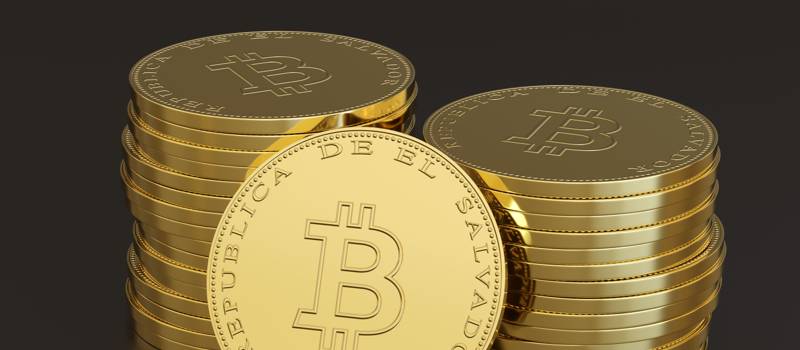
El Salvador to officially adopt Bitcoin as legal tender on September 7
Crypto payment gateway Triple A, summarized what El Salvador’s adoption of Bitcoin as official currency on September 7 will mean for the local economy: payment processors that facilitate the immediate transfer of crypto into fiat currency and enable acceptance of Bitcoin (BTC) payments for e-commerce, point-of-sale, invoicing and remittance will have a finger on the pulse of the everyday economics of cryptocurrency adoption. Everyday life transactions will be authorized with the option of BTC. El Salvador’s president Nayib Bukele said, “The use of Bitcoin will be optional, and nobody will receive Bitcoin if they don’t want it. If someone receives payment in Bitcoin, they can choose to automatically receive it in dollars.” He then also assured citizens that pensions and salaries will continue to be paid in US dollars. As Bitcoin becomes El Salvador’s official currency alongside the US dollar, businesses in the country can accept it for goods and services payments, while citizens will be able to opt for paying their taxes in crypto. The majority of surveyed El Salvador’s citizens are skeptical of the new official currency. International financial authorities keep adding to the global uncertainty surrounding crypto adoption, but this makes any potential relief for local economies in need of a boost getting overlooked.
El Salvador has a population of 6.5 million, and just over 2 million of those citizens are currently living abroad and sending money home. This has led to a situation where over 20% of the country’s gross domestic product (GDP) is now made up of remittances. In terms of remittances as a share of GDP, the top five countries with such experience in 2020 were smaller economies, including Tonga, Lebanon, Kyrgyz Republic, Tajikistan, and El Salvador. Adopting Bitcoin as the official currency will enable bypassing costly and slow traditional remittance firms and will also open up financial services to 70% of the country’s citizens who do not have a bank account. Bukele committed to developing the necessary infrastructure in order to boost Bitcoin adoption and facilitate financial inclusion, including creating a Bitcoin wallet called Chivo. He will offer $30 worth of crypto to citizens who download the wallet and register an account. In addition, Athena Bitcoin announced a $1 million investment for installing 1,500 crypto ATMs across the country. Both the new wallet and crypto ATMs would enable instant conversions, guaranteeing freedom of choice regarding payment options.

Pantera boss: Upcoming Ethereum catalyst could cause ETH to outperform Bitcoin
During a recent interview with Reuters, Dan Morehead, the Chief Executive Officer of Pantera Capital, which is an American hedge fund focusing on crypto investments, said that Ethereum could outperform Bitcoin in the near future. He made this disclosure while stating he believed that Ethereum holds enormous potential because the number of applications that run on its blockchain, coupled with its lower environmental impact, will eventually help it flip its more renowned counterpart. The Pantera CEO was firm of the belief that the Ethereum Improvement Proposal (EIP) 1559 upgrade that is scheduled to go live on Wednesday will help the second largest crypto asset by market cap to become a tradable “fixed asset.” He went on to discuss that people looking to use cryptocurrencies as a store of value would begin to see Ethereum as a more viable option than Bitcoin. In his words, “You’ll see a transition of people who want to store wealth, doing it in ETH rather than just Bitcoin.” EIP 1559 is an Ethereum upgrade which will help reduce the huge transaction fees that ETH’s blockchain tends to charge. It is also intended to move the network to a Proof of Stake (PoS) network, which would drastically reduce the level of energy usage during mining of the asset.
However, Morehead added that he sees Bitcoin finishing the year strongly, as well, and predicted that the leading digital asset could finish the year between $80,000 and $90,000. He noted that the coin’s value could rise above $120,000 a year from now and hinted that with an expected increase in institutional adoption, BTC’s price could go as high as $700,000 within the next 10 years. Morehead addressed the level of institutional adoption Bitcoin has seen recently, and noted that, despite the drop in the asset’s value since April and its inability to regain its previous heights, his firm, Pantera Capital, has had great success in drawing in more institutional investors who see the current price decline as an opportunity to buy into the space. Regarding the increased regulatory scrutiny which the industry is currently facing, he says it is because we are in a “transition period.”
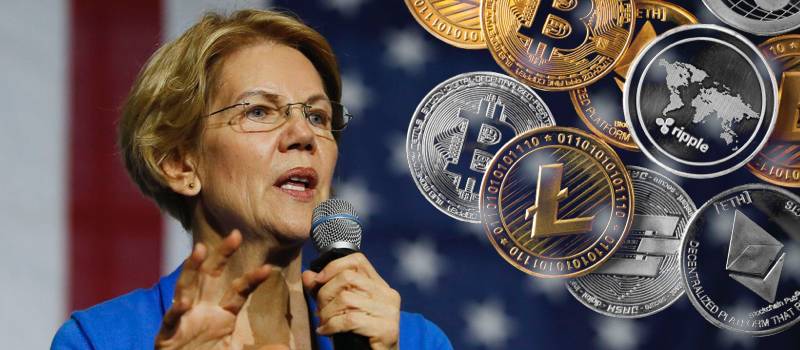
Senator Elizabeth Warren says crypto might need a ‘bailout’ if things go wrong
In an interview with Bloomberg, Senator Elizabeth Warren warned about major risks surrounding the ongoing expansion of crypto and, of course, she called for stricter market regulation. While admitting that crypto’s biggest upside might come from the democratization of access to the financial system, she warned that cryptocurrencies pose a systemic threat which could lead to another financial crash if they are left unregulated. “So long as it’s an unregulated system, you may be pulling more people in so that they can get cheated and that’s not what we want,” she stated, urging regulators to start policing the market. The Senator said one of her concerns was the pressing consumer protection issues, and from there, she transitioned into the surrounding risk that is threatening the broader financial structure. According to Warren, one possible benefit of crypto was that tens of millions of unbanked and underbanked US citizens would be the ones to benefit the most from expanding to a digital currency system.
She also reflected on pump-and-dump schemes, which are illegal for stocks but often go unpunished for tokens due to the “lack of basic rules” surrounding crypto. “Right now, we don’t have any cops on the beat to speak of,” Warren told Bloomberg. She thought that regulators need to “step up and take hold of the piece that’s within their jurisdiction.” Comparing a possible crypto scenario to money markets ahead of the 2008 financial crash, she stated that unregulated crypto market presents a systemic risk. “The bigger it gets and the more it stays outside the financial system – something goes wrong, there’s a run on crypto, there’s a problem elsewhere in the economy, I don’t want the US taxpayer to be the one that gets called on to back this up,” she said. This all came on the back of Securities and Exchange Commission (SEC) Chair Gary Gensler’s pledge to introduce more enforceable actions to the space.
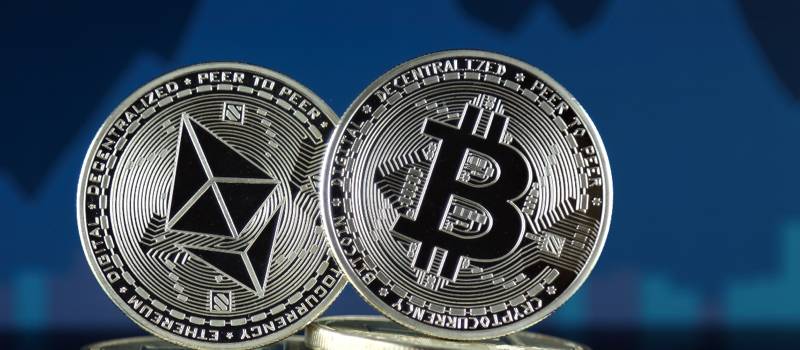
Ethereum (ETH) breaks above $3,000 as Bitcoin (BTC) breaks above $44,000
What a weekend it has been! The end of the second week of August saw most major digital assets staking extensive gains. Over the few days prior to this, a lot of crypto investors have been glued to Ethereum’s (ETH) price movements, since the blockchain underwent a massive network upgrade called London on Thursday. Among other improvements, this upgrade introduced a deflationary token burn mechanism, and many were hoping that due to this, the price of ETH to go up—well, guess what? It did. By early Monday morning, August 9th, ETH had been trading at around $3161, up 9.7% during the last 24 hours, according to the crypto metrics platform CoinGecko. More than 10,000 ETH have already been burned since the London upgrade—worth over $31,000 million at current prices. Meantime, Bitcoin reached a 24-hour high of about $44,700, up 4% on the day. Among the top-10 crypto by market capitalization, however, only Dogecoin managed to post two-digit growth. The price of canine-themed meme coins gained 34.2% on the day and reached $0.276 at press time. Other top cryptos showed somewhat less enthusiastic results in the last 24 hours. Binance Coin (roughly $356, +4%), Cardano ($1.48, +5.2%), Ripple’s XRP ($0.833, +11.6%), and Uniswap ($28.49 +8.2%) remained in the green zone. During the same time period, Decentralized finance (DeFi) also followed the upward trend as the sector grew by 6.75% as a whole.
According to CryptoSlate’s DeFi sector data, besides Uniswap, the most popular tokens such as Chainlink ($24.69, +3.5%), AAVE ($386.84, +5.2%), Maker ($3,413, +4.9%), and Compound ($507.83, +8.7%) were leading the charge in terms of daily gains,.
US Senator says proposed crypto laws are a ‘huge mistake’
United States Senator Mike Lee of Utah raised concerns that the crypto tax provision in the $1.2 trillion infrastructure bill will send more citizens below the poverty benchmark line.
Warning that passing the legislation, which he feels is unproven, would stifle innovation in the country, while noting that cryptocurrencies, generally, are not regulated like securities. In one of the earliest oppositions to the move to adopt the provision, Lee stated that the regulation of crypto would drive away innovation since cryptos do not operate under policies by the government. He outlined his numerous concerns during the Senate session last Saturday. Even though Lee admitted that crypto is “an industry that’s rapidly developing within the United States,” he stated that the provision in the infrastructure bill would require those who buy and sell cryptocurrency to treat it the same way as they would securities, and that this itself would be problematic because cryptocurrencies are very different than securities. “These aren’t just stocks. It’s something very different. It’s a medium of exchange that, if adopted more widely, could facilitate a lot of economic activities and a lot of innovation within the United States of America,” Lee argued.
He then warned that if the bill gets passed, it’s going to have a chilling effect on innovation within this sector, mostly because other countries will be the ones to reap the benefits of crypto, so long as their own laws pertaining to crypto make more sense. “If what you’re going to do is take away that value by requiring that all of it be registered and publicly disclosed by giving the federal government the ability to peer into it, you’re going to stifle innovation, you’re going to make a lot of people upset, and you’re going to make Americans poorer,” he added.
Whale’ indicator that preceded 2020’s Bitcoin (BTC) crash is now back
Bitcoin proponents and investors are calling for a new ‘supercycle,’ and predictions about where the world’s largest cryptocurrency by market cap will go, reach as high as $1 million in certain circles. However, this outlook might be spoiled if one considers a certain technical indicator – the “$BTC Exchange Whale Ratio (72h MA) has reached 90%,” warned the founder of the crypto analytics tools CryptoQuant, Ki-Young Ju. In a tweet at the start of last week, Ju stated, “It’s highest since Feb 2020, before the mass-dumping. Don’t take too much leverage on your longs. Be careful.” So, just what is this whale dumping tool? CryptoQuant states that ‘Whale Dumping’ is a measure of deposits from some of the largest holders of Bitcoin, who are known as ‘whales’ in financial circles. Although these whales are usually secretive about their trades and their identity is often unknown, tracking whale wallets helps provide information on what large holders of Bitcoin and other cryptocurrencies are doing.
Many times, their trades could impact the market. Two indicators are used by CryptoQuant to check how whales dump their coins. The first is an ‘All Exchanges Inflow Mean (24h MA)’ tool that calculates the average amount of Bitcoin deposits to all crypto exchanges. The second is an Exchange Whale Ratio tool, which calculates the top 10 inflow transactions to total inflows. The latter indicator is said to flash a ratio above 85% when prices shoot upwards in a ‘fakeout’ which sometimes precede a dump. The CryptoQuant blog notes, “In the bull market, it often keeps below 85%. On the other hand, in the bear market or fake bull for a mass-dumping, it usually keeps above 85%.” Where’s Bitcoin on that chart now? Bitcoin’s ‘Exchange Whale Ratio’ was at a 0.90 level early last week, signifying conditions might be ripe for a ‘mass dumping.’ Bitcoin saw sudden drops on several instances the last time these levels were reached. In March 2020, for instance, when BTC fell to below $4,000 for several hours, the tool reached a high of 0.90. The tool stayed above 0.85 in November 2018, when Bitcoin fell from above $6,000 to under $3,900. Bitcoin trades above $45,000 for now and is up nearly 15% in the past few days alone. However, seeing resistance at the $46,000 level, could the Whale Dumping tool, once again, prove to be correct? We shall see ….
American cinema giant AMC is now accepting Bitcoin (BTC)
In what was one of the latest in a series of events indicating the acceptance of crypto as a valid means of exchange globally, the largest American cinema operator, AMC, announced that it will begin the acceptance of Bitcoin for payments for movie tickets by 2022. This announcement was made by the cinema’s chairman and CEO, Adam Aron, who was speaking during a conference call regarding the firm’s second-quarter results, which were announced on August 9.
Aron emphasized that the demand for the acceptance of crypto for the purchase of movie tickets from the cinema’s customers is very high, and according to him, the cinema chain intends to ensure the necessary infrastructure required for the acceptance of Bitcoin for payments for online movie tickets are in place before the end of this year. Thus, it can commence its acceptance next year. In the firm’s Q2 performance, released earlier in the day before Aron’s call, the group showed massive improvements compared to last year’s results. AMCs Q2 impressed most investors, as the results come just one year after the firm appeared destined for bankruptcy, since the cinema operator was forced to close venues as the global coronavirus pandemic spread. AMC reported a total of $444 million in revenue compared to Q2 of 2020 when it recorded just $18.9 million in revenue. The firm’s net losses declined from $561 million or $5.38 per share to $349 million or $0.71 per share year-over-year. Aside from the adoption of BTC payments, which were featured prominently in the CEO’s announcement, Aron also revealed that the firm plans to open in over twelve new locations across the United States, Europe, and the Middle East before the end of 2021.
Ted Cruz says crypto got ‘screwed’ after senate votes on infrastructure bill
US Democrats objected to moves which would make further amendments to the crypto tax provision in the infrastructure bill, in an occurrence whose effects are yet to be fully determined.
Senator Ted Cruz, who represents Texas in the United States Senate, revealed in a tweet on the third Monday, “Crypto got screwed tonight,” noting that the disagreement over the issue of spending took a partisan dimension, with Democrats voting against its change. “That means NO vote on Wyden-Lummis to lessen the damage this bill will do to crypto, NO vote on the Cruz amendment to repeal the new crypto rules altogether,” he wrote. He then argued that the effect of the Senate’s action would be to inflict billions of dollars of damage on the growing crypto industry and would drive much of its business overseas. “There aren’t five Senators who understand much of anything about crypto,” the Texas Senator claimed before signifying that this action was reckless and harmful. “What the Senate said tonight: Let’s tax the hell out of something we know nothing about, so we can pass a giant bill we haven’t read, and spend the American people’s money on stuff we can’t afford,” he added.
In one of the earliest oppositions to the move to adopt the provision of a crypto tax in the $1.2 trillion infrastructure bill, United States Senator Mike Lee had earlier raised concerns that the move would send more citizens below the poverty benchmark line. While warning that passing the legislation, which he described as being unproven, would stifle innovation in the country, he noted that cryptocurrencies are generally not regulated like securities. Regulating crypto would drive away innovation, since they do not operate under policies by the government, he explained. Lee, a lawmaker from Utah, outlined his numerous concerns about crypto during the Senate session last Saturday.
Seriously, Venture Capitalists bring legitimacy to crypto, DeFi, and NFTs
During the summer of 2016, the value of all crypto throughout the world was not quite $10 billion. Since then, that number has increased substantially. Today, anyone can buy crypto with the Robinhood app, S&P 500 companies have placed bitcoin on their balance sheets, and the overall value of the crypto market remains at more than $1.5 trillion. Still, BlackRock CEO Larry Fink recently asserted there was “very little demand” for cryptocurrencies. “In the past, you’ve asked me about crypto and bitcoin. Again, in my last two weeks of business travel, not one question has been asked about that,” Fink said. Yet, the raw data tells a different story. Venture capital funds have invested $17 billion into cryptocurrency companies this year―the most in any single year, and equal to the amount raised in all previous years combined. Peter Thiel, Alan Howard, and Louis Bacon invested $10 billion of digital assets and cash into Bullish Global, a new crypto exchange. The company then raised $300 million in additional funding, and this investment alone would have made 2021 the biggest year for venture capital investment into cryptocurrency. Beyond the new exchange, the remaining $7.2 billion is already on par with the previous record of $7.4 billion set in 2018. Companies have not bought bitcoin for their balance sheets in Q2 like they had in Q1 2021. Venture capital funds, however, are pouring in a lot of money. Blockchain companies were involved in deals which outpaced all of 2020 in just the first half of this year. Venture Capitalists (VCs) have increased from 0.89% to 5.97% from H2 2020 to H1 2021. Clearly, while token sales and ICOs have received a lot of attention when it comes to crypto fundraising, venture capitalists have become very active in the space, as well. Startups today have the clear option of raising money from a crypto-focused VC fund.
When a project raises funds privately with VCs, they don’t have to deal with the pressures of a token-holding community, and this can prove to be quite rewarding in and of itself. Crypto and blockchain technology communities are supposed to have decision-making power, and this changes the way in which projects are brought to market. Since the project is beholden to this community to deliver a successful project, it gets support in the open market. And so, this allows the project itself to instead focus on product development, instead of marketing. As well, this process alleviates the risk that someone is going to dump a huge number of coins and the project will lose overall value. Instead, a project can take on VC funds, focus on their product, and then later raise funds from the public, which can serve as a token distribution mechanism, as well.
The global crowdfunding market is worth $14 billion, and it is expected to triple by 2026. Blockchain has played a big role in this growth, and it is apparent that blockchain and crowdfunding have been a winning formula (EOS and Ethereum each raised more than $4 billion and $18 million respectively through token sales). Token sales make it possible to invest small amounts before crowdfunding, and this process levels the playing field for non-accredited versus accredited investors. In this way, crowdfunding democratizes investing and fundraising. This becomes even more apparent when the crowdfunding is done based on a decentralized formula, and one of the best-known examples of crowdfunding and blockchain is ICOs (initial coin offerings). Whereas traditional fundraising has historically presented too many hurdles since it usually takes one of three forms: self-funding, bank funding, or venture capital: most people don’t have enough money to self-fund, banks require existing businesses with good revenues and cash flow, and venture fund capital often require crossover appeal, new businesses struggle to fundraise through traditional methods, inhibiting growth.
The community has matured since the days of Wild West ICOs, and nowadays, most people want to invest or participate in crypto projects with a promise beyond quick money. Today, many projects first bring VCs on board before doing a public sale, because VCs lend the project credibility. Established investors will have already done due diligence on the value and quality of the project. And so… the only thing we know about the metaverse is that looking into its future, it will surprise many of us. Soon, it is likely that it will combine social media, virtual reality, as well as blockchain and cryptocurrency technologies. Already, celebrities such as Katy Perry and Gary Vaynerhuk have created their own NFTs. Though surprising right now, I expect we will see much more of that in the future.
SEC head Gary Gensler warns of ‘even more’ crypto regulation
Determined to tighten the leash on crypto, Senator Elizabeth Warren wrote to the SEC Chairman last month requesting concrete input on what authorization the agency needed to regulate cryptocurrency exchanges. Senator Warren recently released his response. Securities and Exchange Commission (SEC) Chair Gary Gensler sent this letter addressing the “opaque and volatile” crypto market and influenced a resolution as far as whether the U.S. Congress should intervene. “I believe we need additional authorities to prevent transactions, products, and platforms from falling between regulatory cracks,” wrote Gensler, adding that “the legislative priority should center on crypto trading, lending, and DeFi platforms. While each token’s legal status depends on its own facts and circumstances, the probability is quite remote that, with 50 or 100 tokens, any given platform has zero securities.” In adding that part, he affirmed that the question of securities’ status is clear. “Certain rules related to crypto assets are well-settled. The test to determine whether a crypto asset is a security is clear,” asserted Gensler, while pointing out regulators will “need more resources to protect investors in this growing and volatile sector.” As if that was not clear enough, Gensler went on … “Further, while many overseas platforms state they don’t allow U.S. investors, there are allegations that some unregulated foreign exchanges facilitate trading by U.S. traders who are using virtual private networks, or VPNs.” He then questioned whether US crypto traders are easily evading overseas exchange bans.
And on, and on … Gensler also took the opportunity to draw the Senator’s attention to the booming stablecoin market worth $113 billion, pointing out their primary role in crypto trading and lending. “To trade crypto-to-crypto, usually, somebody uses stablecoins,” He explained (fascinating that he understood this well enough), while further elaborating that “in July, nearly three-quarters of trading on all crypto trading platforms occurred between a stablecoin and some other token.” According to the regulator, the use of stablecoins “may facilitate those seeking to sidestep a host of public policy goals connected to the traditional banking and financial system: anti-money laundering, tax compliance, sanctions, and the like.” Sounds like something done frequently with most other assets that engender a whole host of regulations anyway! So why the prejudice against crypto?
The consequences of Bitcoin (BTC) issuance at zero are sooner than you think
There will only ever be twenty-one million Bitcoin in existence, and so what happens when all the Bitcoin has been mined? This topic is a hotly contested within the cryptocurrency community and has no clear answer. What is known for sure is that miners who secure the network, will have less incentive to stick around. According to Justin Drake, a researcher at the Ethereum Foundation, the ramifications of this fact means that significant changes will be coming to the Bitcoin protocol, and many believe this will occur sooner than most investors think. Since the current circulating supply of Bitcoin is around 18.8 million BTC, this would account for almost ninety percent of all the tokens that will ever exist. At the current rate, a 6.25 BTC block reward is issued every ten minutes. This equates to 900 new BTC entering circulation each day. Because this rate halves every four years, it won’t be until 2140 that all 21 million tokens will have been mined and its issuance becomes zero. Since all of us reading this article currently would have passed away before then, many consider this a low-priority issue – something for the next generation to deal with. However, Drake reasons that the effects of close to zero Bitcoin issuance are just as pertinent, and that this scenario will happen within the next 20-30 years.
“So very, very quickly, you realize that Bitcoin will be a very unstable system. And it won’t happen a hundred years into the future when the issuance is zero. It will actually happen 20 to 30 years into the future,” Drake recently expounded. In eight halvings time (the year 2052), the issuance rate will be 3.5 BTC per year, which will yield just 0.0243 BTC for each block reward. Drake added that this is likely insufficient to secure the Bitcoin blockchain. To counter this, he gave a number of suggestions, starting with the obvious one of increasing the 21-million-limit. That way, miners would have more incentive to stick around and secure the blockchain: “… they could remove the 21 million block limit. They could start increasing the block issuance again and start reviving the blockchain from a security standpoint.” Perhaps more controversially, Drake also proposed a split of Bitcoin from the Bitcoin blockchain. Under this scenario, BTC, the asset, would be hosted on a different blockchain. “And BTC the asset, which is super scarce like gold, can go live somewhere else on another blockchain that will host it for free. And that blockchain, for example, could be Ethereum.” But more likely are protocol innovations that would see major shifts, such as altering BTC’s reward structure. Or, changing to a proof-of-stake consensus mechanism, just as Ethereum is in the process of doing.
Total crypto market cap back above $2 trillion, FUD now a distant memory
The total crypto market cap edged above $2 trillion early during the fourth week in August, making a 12-week high as the market leader, Bitcoin, targeted $50,000, which is a level not seen since FUD ramped up just as the summer season got underway. Many were filled with worries that we were about to return to another “crypto winter.” However, strong performances over the past few weeks have put those worries to rest and we are now talking about the next wave of the bull market. Ever the joker, Elon Musk started sounding the alarm on the environmental damage caused by Bitcoin mining, leading him to withdraw BTC as a Tesla payment option (is anyone buying his cars anyway?). More recently, during the ฿ Word conference, he said he would revisit this decision and possibly reinstate BTC as a payment option, and that this was subject to confirmation that renewable sources accounted for 50% or more of the mining process. Considering his trolling of the Bitcoin community at the time, many say the damage to his reputation has already been done. Right after Musk’s rants, China began enforcing a crypto crackdown within their country (it truly seemed like a coordinated attack against crypto).
Even though Chinese authorities had committed similar actions against crypto in the past, this time the forced closure of mining operations across Sichuan, Henan, Gansu, and Anhui provinces showed that the CCP was deadly serious. At the time, Bitcoin dipped to as low as $29,800, which was a fifty-five percent drop from its all-time high of $64,000. The hash rate also plummeted. Just as Musk seems to be walking back his earlier statements, the China-FUD has now also died down. Bitcoin has posted a 60% gain from those early summer lows, and the hash rate is also recovering. The U.S and Kazakhstan seem to be benefiting from the Chinese mining exodus. Although the total crypto market cap is currently at $2 trillion, it’s still some $500 billion short of its pre-FUD peak. Having bottomed at $1.2 trillion in mid-July, the bulls are seeing a strong recovery, and this is bringing with it renewed optimism. Ran Neuner, CEO and co-founder of OnChain Capital, thinks the bulls will be quite happy. “I don’t know who needs to hear this, but we are about to see the biggest bull run of our lives.” Over the 7-day period prior to Monday of last week, we saw XRP up 58%, Solano up 57%, and Cardano sizzling with a 48% gain. Sustaining this run will depend upon what Bitcoin will do. However, with many investors calling for a BTC end-of-year price target of $100,000, it looks like Neuner just might be correct with his call.
XRP, Ethereum fall as popular index flashes ‘Greed’ sign
The crypto fear and greed index, which is nothing more than a collective metric that estimates the current sentiment on the crypto market, remained in the “greed” zone, and yet most of the major cryptocurrencies entered last week with a price uptick. This index is meant to reflect daily emotions and sentiments for Bitcoin (BTC) and other large cryptocurrencies. These attitudes are gathered and analyzed from different sources, such as, amongst others, current market volatility, volume, momentum, and social media behavior. Scaling from 0 (maximum “fear”) to 100 (ultimate “greed”), the measurement typically passes through the “neutral” range (50) and moves into the “greed” zone during periods of strong price rallies, which typically occur when demand for crypto outweighs supply. Following Bitcoin’s price drop in mid-May, the crypto fear and greed index was, not-surprisingly, indicating “fear” in the market and this lasted for more than two months. Market sentiment began to reverse in late July and finally, the Bitcoin metric began revisiting the “extreme greed” level on August 14.
Similarly, the Ethereum (ETH) fear and greed index has also been residing in the “greed” zone recently. Following the major Ethereum network upgrade that launched on August 5, sentiment surrounding the world’s second-largest crypto by market cap also escalated to a state of “extreme greed.” The long-anticipated London hard fork included the EIP-1559 upgrade, which is a reductive measure set to reign in the crypto’s supply growth. Of course, this drove the price of Ethereum up, nudging the fear and greed index pointer to “extreme greed” on August 8, when it jumped all the way up to 79 points. This index has two simple assumptions: “extreme fear” signals investors’ worry and is an opportunity to buy, while “extreme greed” customarily announces the market’s readiness for a correction. Since these tendencies of provoking extreme sentiment have just recently landed, seasoned investors know that there is still the possibility of a lot of room left for greed to do its magic and drive the prices even higher (for now).
The world’s biggest banks are pouring billions of dollars into crypto
So far this year, billions of dollars in institutional and retail capital has poured into Crypto adoption, leading to a boom within traditional and institutional circles. The nascent market even touched $2 trillion earlier in the year. This is only the beginning, according to a recent report from the crypto research firm Blockdata, which shows that over fifty-five of the world’s biggest financial institutions have already invested in crypto and blockchain-related startups. “The most active investors, based on the number of investments in blockchain companies, are Barclays (19), Citigroup (9), Goldman Sachs (8), JPMorgan Chase (7) and BNP Paribas (6),” the Blockdata report noted, adding: “The investors active in the biggest funding rounds are Standard Chartered, BNY Mellon, Citigroup, UBS Group, and BNP Paribas.” As per a separate report from Business Insider, Standard Chartered is an investor in the payments processor and XRP issuer Ripple, with the latter’s investors including the likes of Bank of America and American Express. Another financial powerhouse, BNY Mellon, already offers crypto custodian services and has made strategic investments in Fireblocks, which is a digital assets infrastructure provider.
As per the report, Standard Chartered leads with over $380 million invested over six rounds. The bank is followed by BNY Mellon ($320.69 million over five rounds), Citigroup ($279.49 million over nine rounds), UBS Group ($266.2 million over 5 rounds), and BNP Paribas ($236.05 million over nine rounds). The data shows crypto custodian and storage services are gaining most of the investments from financial institutions, with twenty-three of the top one-hundred banks either building custody solutions or investing in the companies that provide them. These services are integral to the growth of the broader space since the storage and safety of one’s assets remains paramount when the value of these assets is in the billions of dollars. This stands firm, even though crypto is an entirely ownable, peer-to-peer asset class. As Blockdata explained in its report, “Not everyone feels comfortable holding full control over their own wealth, especially companies or institutional investors that hold large amounts.”
Economist claims a $500,000 Bitcoin would be disastrous for CO2 emissions
Alex de Vries, the founder of Digiconomist, predicts that, eventually, the cost of mining a Bitcoin will rise to the price of a Bitcoin. He was referring to the economic theory which states competition will drive profits down over time, and his website studies the consequences of digital trends from an economic perspective. According to his posts there, under this scenario, competitive mining will generate further environmental damage by producing more carbon dioxide. He concludes that the domino effect of a $500,000 Bitcoin would compound the issue to a large degree and then lead to an environmental disaster. Since many in the crypto world claim that the BTC network already runs to a great degree on renewable sources, could it be that de Vries’s report is simply another FUD attempt to crash the Bitcoin party? Since bottoming at $29,800 in mid-July, Bitcoin has posted a strong recovery, and even more so for the past two weeks as the bulls make the charge in the hopes of taking $50,000. This, of course, is a key psychological price level. During these past two weeks of the bull, talk of a new crypto winter has all but disappeared, and we are now squarely looking right into the real prospect of a $100,000 end-of-year price.
Bitcoin’s rising star has once again reignited a wave of lofty price predictions, including a $300,000 end-of-year target from on-chain analyst Willy Woo. Indeed, we even now have Dan Held’s extreme $9.5 million per token price prediction at some point in the future. However, should the price of Bitcoin approach these sky-high levels, de Vries (and others) fear that the network’s carbon footprint would expand to disastrous proportions. The reasoning is that the environmental cost of a booming BTC price follows that the laws of supply and demand, and so if the price of BTC goes up, this will increase mining revenue and profitability. As BTC becomes increasingly scarce over time, this, in turn, will attract more miners to join the network, pushing up mining difficulty, and in the long run, making an already competitive endeavor even more competitive and less profitable. Using de Vries’s calculations, the dynamics involved with a $500,000 Bitcoin price would produce 617 million metric tons of CO2 a year – an amount far greater than most individual countries. According to his website, “That volume exceeds the footprint for Australia by 56%, Brazil by 40%, South Africa by 40%, and Mexico by 33%. Bitcoin mining would be spreading 70% more carbon gases annually than the United Kingdom’s 352 million metric tons.” However, questions over de Vries’s claims exist. For example, a 2019 study by CoinShares estimates that almost three-quarters of the Bitcoin network runs on renewable energy. If so, this would largely negate de Vries’s claims of a CO2 disaster. FUD, fake news, reality: who do you believe?
Best indicators to trade Bitcoin? This Carl ‘The Moon’ podcast has the answer
For those who don’t know who ‘Carl the Moon’ is just yet, take a look at an episode of CryptoNites. He’s a popular crypto investor and educator who runs a YouTube channel about Bitcoin news, and he is known for his easy-to-watch videos for crypto newcomers, which explain technical analysis in simpler terms. Recently, he spoke with Alex Fazel, the host of the crypto edutainment channel Cryptonites on Part 2 of Fazel’s podcast. Of course, Carl discussed all things Bitcoin, including his take on the best indicators to trade cryptocurrencies, chart patterns, and Bitcoin trends in 2021. Regarding altcoins, Carl said, “I have a reasonable exposure to altcoins. I think that’s rational to have because we know that all schools tend to go up a lot. And I only care about all schools going up against Bitcoin, I don’t care about going up against the US dollar. So, I want to end up with more baseball in the end.” He then added, “I will suggest doing some basic research, of course, not just going and buying random dual-core market cap. But also, you don’t want to buy scams, right, and there are a lot of bad products out there. What I basically tried to do is I rely on information from people that I trust, and I know that they did a lot of research and I take a look at it, of course and then I buy but we’re trying to stay to what I understand”
When Fazel asked him about emotions in trading, Carl suggested, “If you’re buying something without believing in it, without knowing what it is, then the volatility will get to you, you will be emotional. And that is why I don’t have a lot of exposure to these altcoins, for example, because I don’t understand them well enough to hold if they were to dump 60%.” He added, “I think people should always do research, you can buy altcoins that’s completely fine. But in that case, you should do a lot of research, actually just as much research that I did on Bitcoin, which is like, weeks and even months maybe, like extensive research to understand the fundamentals.” He felt that nowadays most new investors do not do due diligence regarding their investments, and this would hurt them in the end. “[Research] what goes into the narrative of why to buy bitcoin. But people just don’t do this in articles at all. People simply buy based on hype or what their friend bought, or something pumped 100% this week, now they want to buy it. It’s a very risky way to get into crypto.”
He then concluded with which indicators he would put more emphasis on when making investment decisions. “People think that the more indicators the better, but in my opinion, you should just choose two-three indicators that you’re comfortable with, get comfortable with them, and learn them and then develop a strategy. Take a look at chart patterns because when you have converging support and resistance formulas to triangles, you have something to treat whenever price breaks out, you enter a trade and you can make money and you don’t really need any fancy indicators for this, to be honest.” It seemed like he had found his favorite along the way. “The RSI is very, very cool to take a look at oversold or overbought [levels]. And one of my favorite things to use the RSI for is the bullish and bearish divergences. So, when you have a divergence between the RSI, and the price to where they basically go against each other, that is usually a sign of a trend change. And that can be very, very powerful.”
You catch the rest of the exciting CryptoNites podcast with Carl’s thoughts on Bitcoin prices, DeFi, and other trending topics by clicking here.
Ethereum’s Vitalik Buterin isn’t sold on Dorsey’s Bitcoin plans
In a recent interview, Vitalik Buterin, a co-founder of Ethereum, has revealed his doubts about the plans Jack Dorsey and Mark Zuckerberg might be making about the crypto industry. As per a report on Bloomberg late last week, Buterin was skeptical about Dorsey and Zuckerberg. The Ethereum founder, during the interview with Bloomberg TV, noted that Jack Dorsey would have to create his own system to bring DeFi capacity to BTC. In his words, “on Ethereum there’s native functionality that allows you to essentially directly put ETH or Ethereum-based assets into these smart contracts, into these lockboxes, where there are then arbitrary conditions that can govern how those assets get released.” He added that, “Jack is basically going to have to essentially create his own system that enforces those rules.” Speaking on Zukerberg’s idea of turning Facebook, Inc. into a “metaverse company,” the crypto industrialist noted that Zukerberg has been involved with a widely scrutinized Facebook-backed cryptocurrency project. To this, Buterin added, “there’s just a wide margin of mistrust about Facebook.” He admitted that constructing its own platform could prove otherwise, but instead, he would advise Zuckerberg to “build on an existing blockchain.”
Putting this in perspective, one has to be familiar with Dorsey and Zuckerberg’s crypto dream. Dorsey, CEO of Square, recently revealed his plans for Bitcoin, saying that Square would be creating a new business unit which would be focused on building an open developer platform in order to make financial services more decentralized, permissionless, and non-custodial on Bitcoin. The Twitter founder also revealed that Square would work towards building a hardware wallet and service whose primary goal would be to drive Bitcoin custodial services more mainstream. All of Dorsey’s plans, coupled with his outspoken support for the star asset, has led some investors to refer to him as the “face of Bitcoin.” On the other hand, Facebook’s CEO Mark Zuckerberg recently revealed that he believed the future of the social media giant could be in the metaverse sphere. At the same time, the Facebook founder is also backing a crypto asset by the name of Diem, which has drawn some level of criticisms and concerns from regulators around the world.
Emerging markets like Nigeria, Kenya led 880% global crypto growth in 2021
A recently published report by on-chain research firm Chainalysis was prepared as an effort to measure grassroots cryptocurrency adoption amid the enormous growth seen in the crypto market over the year due to traction from industries. It has revealed a surge of over 880% in global adoption which was driven mostly by peer-to-peer platforms. The index gives an objective measure of countries with the highest crypto adoption by ranking their transaction volumes and examining their use cases and related transactions. It did not rely upon trading and speculation. In order to determine their overall ranking, about 154 countries were graded on the scale of 0 to 1 in the Global Crypto Adoption Index and it found that P2P trading increased crypto adoption in those nations. Data on global cryptocurrency adoption revealed growing interest from residents of countries as they were willing to enter the space. From the data, the total global adoption as of the close of Q2 2020 stood at 2.5. While the same quarter in 2021 was almost ten times more than this figure and stood at 24. This rate was up 881% in a year and 2300% between 2019 and now. The research suggests that various reasons could have necessitated this growth, such as preserving savings from currency devaluation, transferring and receiving remittances, and other business transactions. However, it also attributed the growth in North America, Western Europe, and Eastern Asia over the last year to Institutional investments.
Interestingly enough, peer-to-peer options have been credited for the surge in crypto adoption in emerging markets. Kenya, Nigeria, Vietnam, and Venezuela rank high in the index. Their transaction volumes on peer-to-peer (P2P) platforms are huge, caused by the inaccessibility of centralized exchanges. The emerging markets set this record despite issues such as currency devaluation and spending limits. However, in terms of web traffic to P2P platforms, Central and Southern Asia, Latin America, and Africa are leading. “Rich” countries like the U.S and China, expected to rank ahead, have both dipped further down on the list. China moved from its previous fourth position to thirteenth, while the U.S moved from sixth to eighth. The report indicated that this drop was due to their lighter P2P trade volume, weighted for the internet-using population. Kenya did more peer-to-peer crypto trades than anywhere else in the world, and Bitcoin and Ethereum peer-to-peer volumes in Nigeria continue surging, despite the crypto ban in Nigeria. Available data has revealed that in the month of June, citizens of the country traded around $38 million worth of digital assets —the second time the country has recorded volume above $35 million.
BINANCE (BNB) SIGNS UP EX-SINGAPORE EXCHANGE CHIEF TO HEAD REGIONAL UNIT
Binance, the largest crypto exchange in the world by trading volume, in its bid to combat its battle with regulatory authorities around the world, has appointed Richard Teng, the former chief regulatory officer of the Singapore Exchange (SGX), as the head of its Singapore’s branch. Interesting strategy – Binance hiring regulatory chiefs in order to become regulatory compliant! Teng, in his previous capacity as a regulatory enforcer, had overseen the formulation and administration of Singapore’s Securities and Futures Act. Apart from that, his experience in the field is vast – from the Monetary Authority of Singapore (MAS) to the Abu Dhabi Global Market. All of this points to his experience and authority within financial markets. Mr. Teng was recently speaking about his new appointment when he said, “We are witnessing rapid mainstream adoption of the blockchain and crypto technology, leading to the need for greater understanding and appreciation amongst individuals, institutions, and governments.”
He concluded by saying, “We seek to work closely with industry leaders and policymakers to enhance understanding of this fast-growing industry and support its sustainable growth.”
His viewpoints were corroborated by Changpeng Zhao, Binance CEO, who hailed Richard Teng for his previous accomplishments. Zhao stated, “We are delighted to have Richard leading the Binance Singapore team in securing more strategic partnerships, fostering innovation, and furthering the local cryptocurrency ecosystem in Singapore.” Meantime, Binance regulatory compliance efforts are going forward full steam ahead. After facing a torrent of regulatory clampdowns, Binance has mandated that all users on its platform make haste to complete their verifications so as to continue enjoying its services. The exchange had stated that this was important in order to become compliant with global regulators, whose Know Your Customer (KYC) and Anti-Money Laundering (AML) policies were at the center of Binance’s perceived shortcomings. According to the report: “All new users (have) to complete Intermediate Verification as it would give them access to Binance products and service offerings, such as cryptocurrency, deposits, trades, and withdrawals. Intermediate Verification includes the submissions of government-issued ID as well as facial Verification.” Zhao is of firm belief that hiring a former regulatory enforcer like Richard Teng will quickly help Binance to become “a leader in regulatory compliance.”
$100,000 Bitcoin and $5,000 Ethereum on track while Cardano leads the large caps
Crypto market leader Bitcoin put in an extremely strong performance the final weekend of August, taking it above $50,000 for the first time since May 15, when the $50,000 price level was hit as BTC was on the way down. That was mostly thanks to Elon Musk’s environmental concerns at the time, which kicked off a very gloomy period. If we fast-forward back to the present, Bitcoin’s upward momentum brings along with it much new optimism, which is quickly spreading across the wider crypto market. Even though Ethereum had a somewhat stagnant prior weekend, the early hours of last Monday saw a 4% gain, bringing the crypto market’s second-place leader by market cap to peak at $3,350 early last week. Meanwhile, Cardano grew 17% during the same period, allowing it to hit a new all-time high of $2.90, and making ADA the best performing large-cap. With the top three firings on all cylinders, most investors cannot help but wonder about end-of-year price predictions. Based on recent momentum, a $100,000 Bitcoin and $5,000 Ethereum seem plausible. Could Cardano accelerate forward from here, as well? It must be said that price predictions are notoriously difficult to get right, which is why many avoid giving them in the first place. Nonetheless, despite the lofty Bitcoin forecasts that are being tossed about, including $220,000 by EOY from Max Keiser, and a staggering $9.5 million at some future point from Dan Held, $100,000 is an often-cited figure for the near-term.
Yes, although it’s ambitious, requiring a doubling of where we are presently, at the same time, it’s still a price target within the realm of possibility. Especially considering Bitcoin has already doubled in value during these past four months. Investor Lyn Alden thinks Bitcoin can hit $100,000, but perhaps not by year-end. Instead, she believes we are already too early in the market cycle for that to happen before 2021 rings in the New Year. However, she remains optimistic about achieving that price target sometime in 2022. “I think we’re still in kind of the early-to-mid stage of its long-term trajectory. So that remains, I think, the best risk-reward as kind of a set-it-and-forget-it allocation.” In regard to Ethereum, she forecasts a $5,000 price target due to the recent London hard fork. What is a realistic end-of-year price prediction for Cardano? As something of a rank outsider, Cardano doesn’t have the same level of coverage as the other two. However, its recent performance has propelled it into the top three and has forced many skeptics to sit up and pay attention. Year-to-date gains for ADA are just short of +1,600%. For comparison, Bitcoin is up just 73% YTD, and Ethereum is up +350%. Traditionally, analysts have given conservative forecasts for Cardano due to its high 32 billion circulating supply of tokens. Coinpedia has given several EOY price predictions, with $3.294 the highest. At the current ADA price, that would require just a 16% appreciation in price, and Alonzo is still over three weeks away from rollout. Yet, the YouTube channel Coin Bureau predicts a $4 – $5 ADA price by EOY, assuming Bitcoin continues moving higher.
Western Union leaving Afghanistan is why the world needs Bitcoin
Speaking on CNBC, Bitcoin-bull Anthony Pompliano said, “get out and get away” regarding those investing in legacy money transfer firms. His comment came in response to Western Union’s declaration that it will suspend its services in Afghanistan, following Kabul’s takeover by the Taliban last week. Pompliano then raised the point that, through the Lightning Network (LN), people can use Bitcoin for money flow at zero cost. He stated that Bitcoin has the added benefit of being uncensorable, and in situations of uncertainty, as seen in Afghanistan at present, it can make the difference between life and death. During the interview, Pompliano was asked how quickly traditional money transfer firms, such as Western Union, might lose market share and/or become irrelevant due to Bitcoin and the LN. In his response, Pompliano didn’t have a timeframe for when that would happen, however he did emphasize using Bitcoin for this type of transaction, saying the LN allows the instant transfer of small amounts globally, and in some cases, at zero transaction cost. “When you look at something like Bitcoin, it allows, through the Lightning Network, anyone to send pennies, literally pennies, anywhere in the world completely for free with instantaneous settlement,” Pompliano stated.
The zero-transaction cost was in reference when using LN services via the Strike app. Per its FAQ section, LN transactions incur little to no fee. “Lightning network fees are minimal and at most will cost a few cents per transaction. We recommend using Lightning to carry out transactions where possible as there is little to no fee associated with a Lightning payment.”
Of particular interest is that Strike’s involvement with building Bitcoin infrastructure in El Salvador is doing much to raise the firm’s profile. Like many places, money flow from overseas migrant workers is something of a lifeline for many Afghans. Similar to El Salvador, Afghanistan’s economy relies heavily on friends and family abroad sending money back home. That is why the suspension of services by Western Union in the country is something of a blow for locals. The firm said it is monitoring the situation and will give an update in due time. As per their website: “Western Union understands the urgent need people have to receive funds, and we are committed to resuming operations for our customers in Afghanistan as conditions permit.” But Pompliano criticized their decision, saying Western Union’s withdrawal from Afghanistan came at the very time its people needed it the most. “At the time of need of literally millions of people, they pulled out of the country. They stopped supporting it….” He said, on the other hand, that Bitcoin, an uncensorable technology, doesn’t abandon people. Instances like this hammer home the benefits of cryptocurrency. He concluded that, especially among the younger generations, these trends will initiate the demise of legacy money transfer firms going into the future.
200 Bitcoin ATMs installed in El Salvador ahead of legal tender adoption
The Bitcoin Law making BTC official legal tender, which was revealed by President Nayib Bukele through parliament in June, will take effect on September 7 in El Salvador. In response, the government began installing crypto ATMs, now that the country has entered the last two weeks of preparation for the big day. The government is installing 200 Bitcoin ATMs and 50 financial branches across the country which will enable Salvadorians to convert the cryptocurrency into US dollars, and also withdraw from them in cash, Bukele commented on Twitter. All transactions will be commission-free and carried out through the official digital wallet dubbed Chivo, meaning “cool.” The President then reassured citizens that the choice of opting for US dollars won’t be taken away from them. “With this application, you can accept payments in Bitcoin or in Dollars, open a small business and run it from there, receive money from family or friends and send and receive remittances without paying a single penny of commission to anyone,” Bukele stated, and then he added that adopting Bitcoin could save Salvadorans $400 million per year in fees for receiving remittances from abroad.
In an effort to promote BTC adoption, those who opt for Bitcoin (BTC) and choose to download the Chivo application will receive $30 worth of Bitcoin for consumption. It seems like everyone in El Salvador will begin the realization of a new currency for the country on September 7th.
These changes initially raised much controversy, beginning with the World Bank’s refusal to assist El Salvador with integrating Bitcoin into its financial infrastructure. That was followed by the International Monetary Fund warning about economic implications and legal risks that may surface as a consequence of El Salvador’s bold legislation. There were even public opinion surveys and public protests. While some financial institutions continued raising doubts, others acknowledged the key benefits of the legal tender adoption. In the midst of it all, Bukele remained determined, saying nothing would hamper Bitcoin from seeing widespread adoption in El Salvador. He continuously focused on the economic relief and investment opportunities that his initiative will bring to the country.
Fund manager pegs Bitcoin at $100,000 in 2022. But warns of sell-offs
To the moon (and back? And back again?)! Florian Grummes, the managing director of the investment advisory firm Midas Touch Consulting, predicted a $100,000 price mark for Bitcoin in the next six months, with a possible dip. Speaking to Kitco News, he warned investors to treat the current surge with caution, noting that another correction may come to BTC soon before it would then advance to a new all-time high. Grummes described the last five weeks’ recovery as a nice, strong bounce, and he maintained that BTC will Reach $100,000 in 6 months; indeed, even mentioning that the $100,000 level is a conservative target. “What we’ve experienced over the last five weeks is a nice, strong bounce that is [typical] in crypto after a first sell-off. Another sell-off [could extend] to $25,000. That is still possible; otherwise, Bitcoin turns around at $35,000 and goes back to $60,000, and the bull market continues. I think $100,000 is probably happening within the next six months.” Grummes then described what the market should expect if Bitcoin reaches the level predicted. He said that by the time the flagship asset traded at $100,000, it would be a historical moment which would see more fund inflows from investors. However, it may experience massive selloffs at that time: in his belief, volatility will reduce despite potential wild swings, and the world-class asset may go as high as $1 million in a couple of years.
His prediction is coming at a time when Bitcoin is looking to maintain the $50,000 support level once again. Grummes sees the current price movement indicating either another crypto winter or that BTC is on its way to $100,000. For the past several weeks, Bitcoin has been changing hands at about the $47,400 price level. He noted that the oversold condition of Bitcoin is what had accounted for the recent rally, and he felt that, overall, the sector is becoming more mature. Bitcoin has now survived the China trauma, which had temporarily disrupted mining activity.
The post The Digital Asset Landscape August 2021 appeared first on JP Fund Services.
Tradersdna is a leading digital and social media platform for traders and investors. Tradersdna offers premiere resources for trading and investing education, digital resources for personal finance, market analysis and free trading guides. More about TradersDNA Features: What Does It Take to Become an Aggressive Trader? | Everything You Need to Know About White Label Trading Software | Advantages of Automated Forex Trading


























